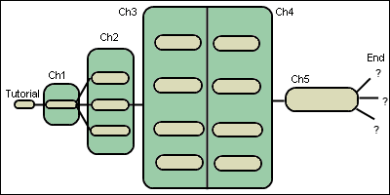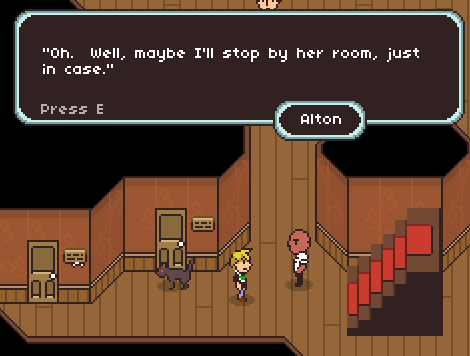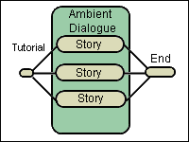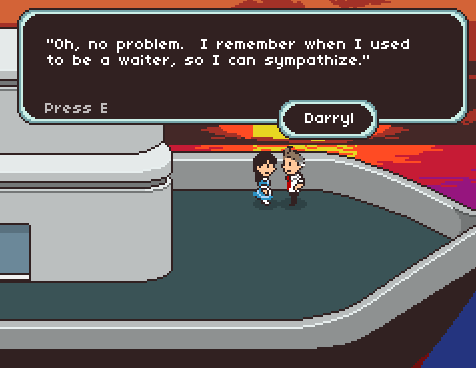I had originally planned on opening up my series of more informative posts with a big post on AI, but since I’ve been mostly doing dialogue and cinematic writing, I’ve been inspired to make a post about the game’s overall structure instead.
Let’s start by describing the game in the simplest and most basic way possible. The gameplay involves me throwing a huge amount of writing and text at the player, and having them search for the important bits of information in there. Unlike other adventure/mystery games, there aren’t many puzzles or problems that if you can’t solve, you’re stuck. In WAID you always had access to everything you need. If you felt up to it, you could always brute-force through the challenges of the game by triggering every single dialogue and dialogue branch.
The challenge is to find the hints I’ve scattered in order to figure out which character interactions will get you on the right track. Of course, the non-vital dialogues are both an obstacle in that they obscure what you need, as well as a bonus in that they can flesh out the story and give further insight to the characters.
Let’s take a look at the structure of the previous “Why Am I Dead”. There is a wide body of what I refer to as ambient dialogue: the sum of dialogue which obscures the way forward. There are also smaller pieces of story dialogue which are actually needed to trigger the ending of the game. The way the game was structured, it could take you hours to finish it, or two minutes.
How does this structure look for a longer game, though? I would certainly like “Why Am I Dead At Sea” to last longer than that, whether “that” is two minutes or two hours. So how do we make that happen?
There were two challenges that I saw going into this project. Firstly, it seemed to me that a longer/larger game would run into the problem of overwhelming the player with far too much ambient dialogue far too quickly. As it was, the original WAID wasn’t extremely navigable and could bring the player down time-consuming dead-ends. Some people enjoyed this, but some did not!
And secondly, for a larger story I would want time to pass as the plot moves forward – that is, things would have to be a bit more sequential in order to make sure there was some plot. In the previous WAID nothing happens without player input except at the beginning and end, which was fine…but in this game that severely limits the kind of story I can tell!
So I decided I wanted to taper the beginning of the game, bringing the player into the ambient dialogue slowly. I also wanted to cut up certain parts of the game into self-contained ‘chapters’, in which there was only one entrance and one exit, so that some modicum of stage-setting could be done. The resulting structure for Why Am I Dead At Sea looks like this:
 This is accomplished, admittedly with some awkwardness, by restraining who you can possess and where you can go at the beginning of the game. For the first two major parts of the game there is a substantial amount of optional dialogue accessible, but not so much that the player is drowning in it. Objectives are hopefully much more clear. As each new character becomes available to possess, however, the amount of ambient dialogue also increases.
This is accomplished, admittedly with some awkwardness, by restraining who you can possess and where you can go at the beginning of the game. For the first two major parts of the game there is a substantial amount of optional dialogue accessible, but not so much that the player is drowning in it. Objectives are hopefully much more clear. As each new character becomes available to possess, however, the amount of ambient dialogue also increases.
This also allows for that oldest of design tropes seen so often in LoZ dungeons – if there’s a new character you just unlocked, you can be confident you will have to use them pretty soon. I wasn’t allowed to guide the player in this way before!
And just as importantly, having certain choke-points for the story allows me to do things such as have small periods of time pass, or move characters move around, and so on. This isn’t trivial. A weird thing about the last game was that, to preserve an interesting pace, characters had to spill their guts to each other very quickly, without knowing anything about each other! It was possible to suspend disbelief, but definitely felt off. This time around I want dialogue to feel more organic, which means at least the illusion of some time passing.
So that is, in a nutshell, the layout of the game.



